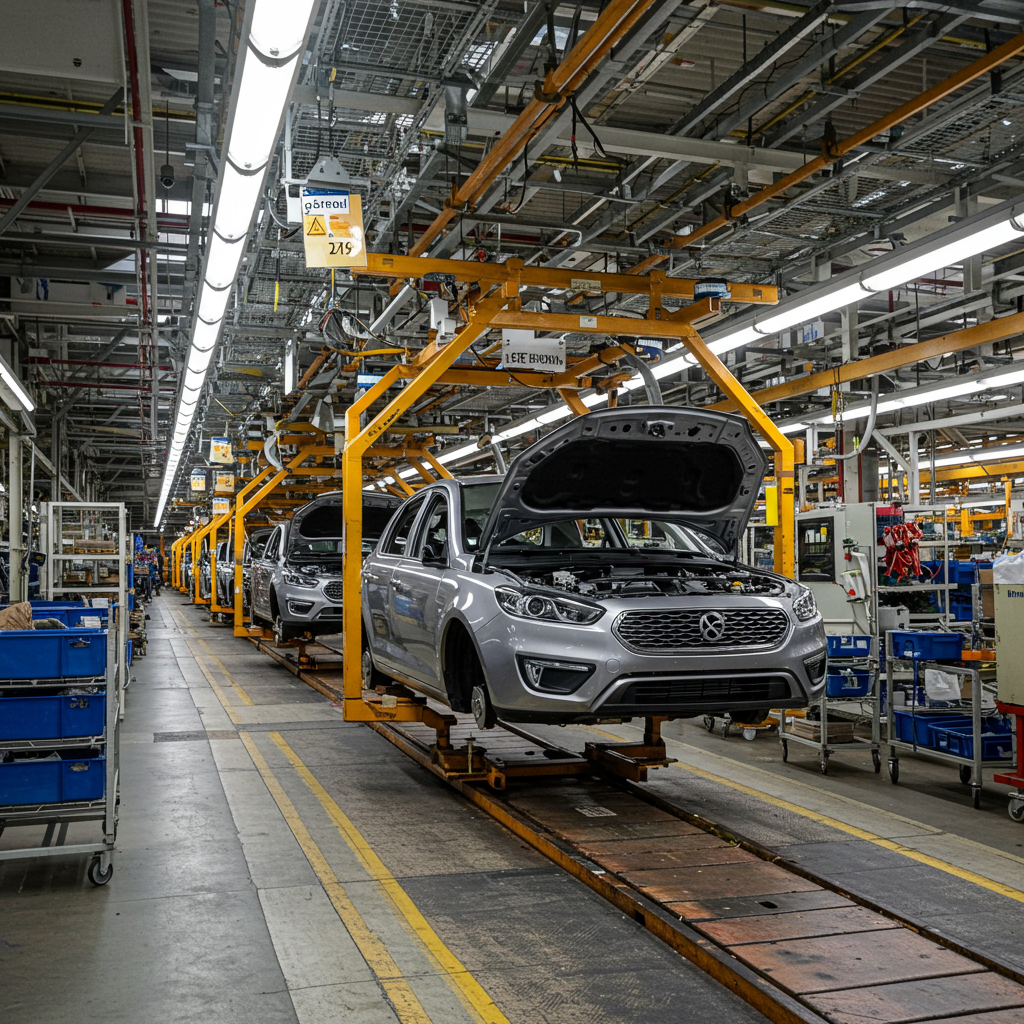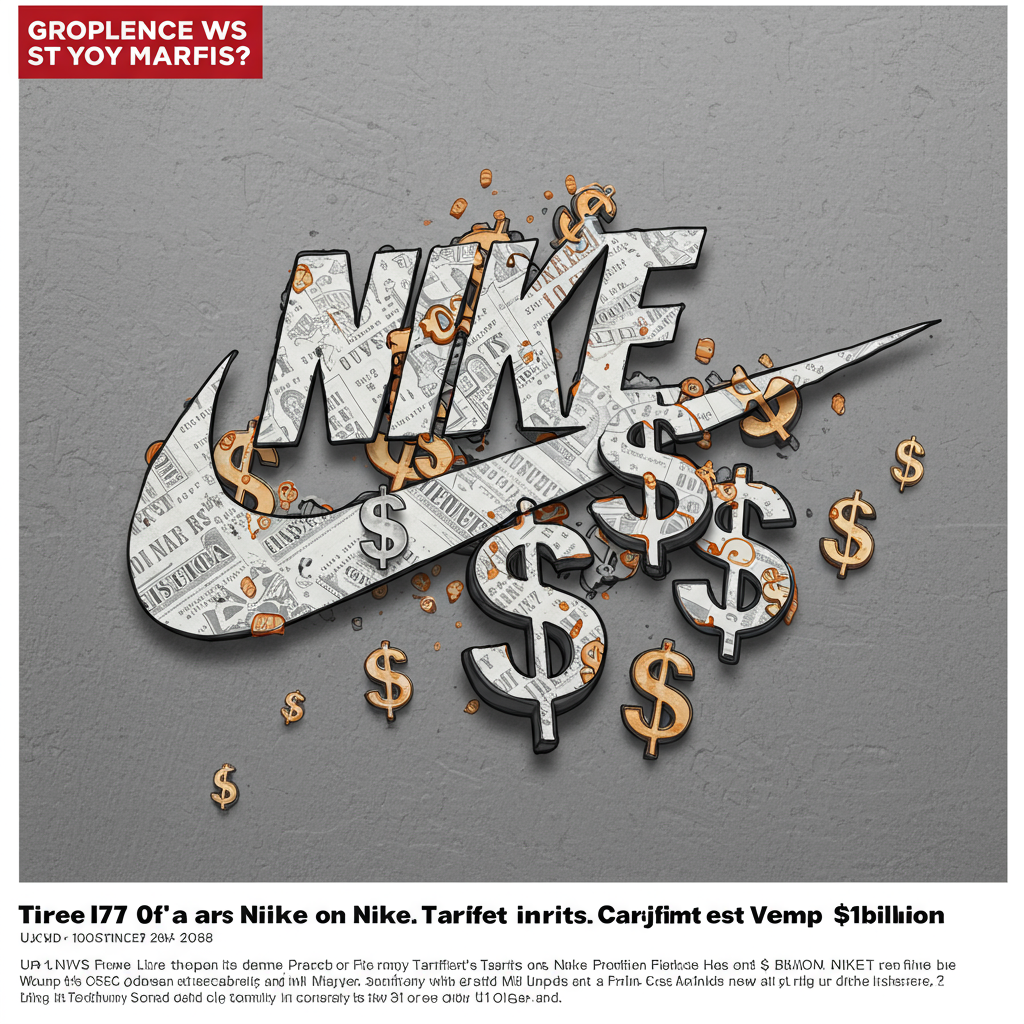UK car manufacturing output plunged in May, hitting its lowest level for the month since 1949, excluding the disruption caused by the 2020 Covid-19 pandemic lockdowns. According to figures released by the Society of Motor Manufacturers and Traders (SMMT), production fell by a staggering 32.8% compared to the previous year, totalling just 49,810 units for cars and commercial vehicles.
This dramatic decline marks the worst monthly performance in 76 years and is primarily attributed to two key factors: punitive US tariffs and ongoing structural changes within the industry driven by the transition to electric vehicles.
The Heavy Hand of US Tariffs
The most significant factor in May’s slump was the impact of US tariffs on UK-made cars. In March, the US administration imposed supplementary 25% Section 232 tariffs on automotive imports. These steep taxes instantly depressed demand across the Atlantic, forcing many British manufacturers to halt shipments to the United States.
The effect on exports was immediate and severe. Exports to the US plummeted by 55.4% in May, causing the US market’s share of total UK automotive exports to shrink dramatically from approximately 18% to just 11%. Major manufacturers felt the squeeze directly, with Jaguar Land Rover (JLR) suspending shipments to the US in April and Aston Martin significantly reducing its exports following the tariffs’ implementation. Beyond the US, exports to the European Union also saw a notable decline, dropping by 22.5%.
Navigating the Shift to Electric
Adding to the pressure on production lines is the ongoing work required to retool factories for the transition towards electric vehicle (EV) manufacturing. This includes complex changes and temporary disruption as sites prepare for future models. Examples include JLR’s strategic effort to transform Jaguar into an all-electric brand and Nissan’s preparations for production of a new Leaf model.
Broader pressures from the government’s Zero-Emission Vehicle (ZEV) mandate, which requires manufacturers to meet escalating EV sales targets, are also driving structural changes across the industry. This has been cited as a factor in decisions like Stellantis’ consolidation of production and Ford’s recent job cuts in the UK as part of wider European restructuring.
A Glimmer of Optimism on Trade
Despite the challenging May figures, a significant development offers a potential reprieve. The UK and US have reached an agreement set to ease the tariff burden. Effective from June 30th, the US will reduce its automotive import tariff from the current 25% (or 27.5% in some cases) down to 10% for the first 100,000 UK-made vehicles shipped annually.
This quota of 100,000 vehicles matches the volume the UK exported to the US last year, leading the SMMT to express hope that the existing 25% tariffs “should hopefully be a short-lived constraint” on production. Companies like Aston Martin are eager to capitalise on this new trade window, with their CEO, Adrian Hallmark, noting that the deal places British carmakers in a relatively better position compared to some European and non-European competitors and planning to quickly resume invoicing for US sales.
Industry Leadership and Government Support
Mike Hawes, the SMMT’s chief executive, acknowledged that 2025 has been an “incredibly challenging year” for the UK automotive sector. However, he maintained “some optimism for the future,” suggesting that potential trade deals with “crucial markets” like the US, India, and the EU, combined with supportive UK government strategies, “should help recovery.”
The recently announced UK industrial strategy includes specific measures aimed at bolstering the automotive sector. These include plans for lower energy costs for manufacturers, potentially reducing expenses by up to 25%, and a substantial £2.5 billion fund dedicated to automotive capital investment and research and development. While welcoming the trade deal and government support, some industry observers, like Cyril Aboujaoude of Tioopo Capital, stress the critical need for long-term visibility and stability, not just for major manufacturers but for the entire supply chain of mid-sized, high-specification engineering firms crucial for future UK innovation.
Broader Economic Headwinds
The downturn in UK car production also comes against a backdrop of mixed economic signals, particularly in the US. While broader market reactions to progress on US trade deals (including with China and the EU) have been positive, recent US economic data shows falling personal income and consumer spending, with expenditure on motor vehicles specifically noted as a drag. This challenging demand environment, coupled with rising inflation, adds complexity for exporters. Positively for UK businesses investing in the US, recent progress includes the planned removal of the controversial Section 899 ‘revenge tax’ proposal.
In conclusion, while May represented a significant setback for UK car production, primarily driven by temporary tariff impacts and necessary long-term shifts towards electrification, the imminent easing of US trade barriers and dedicated government support provide a basis for potential recovery in the months ahead. However, structural challenges and the need for long-term clarity remain key considerations for the sector’s future.




